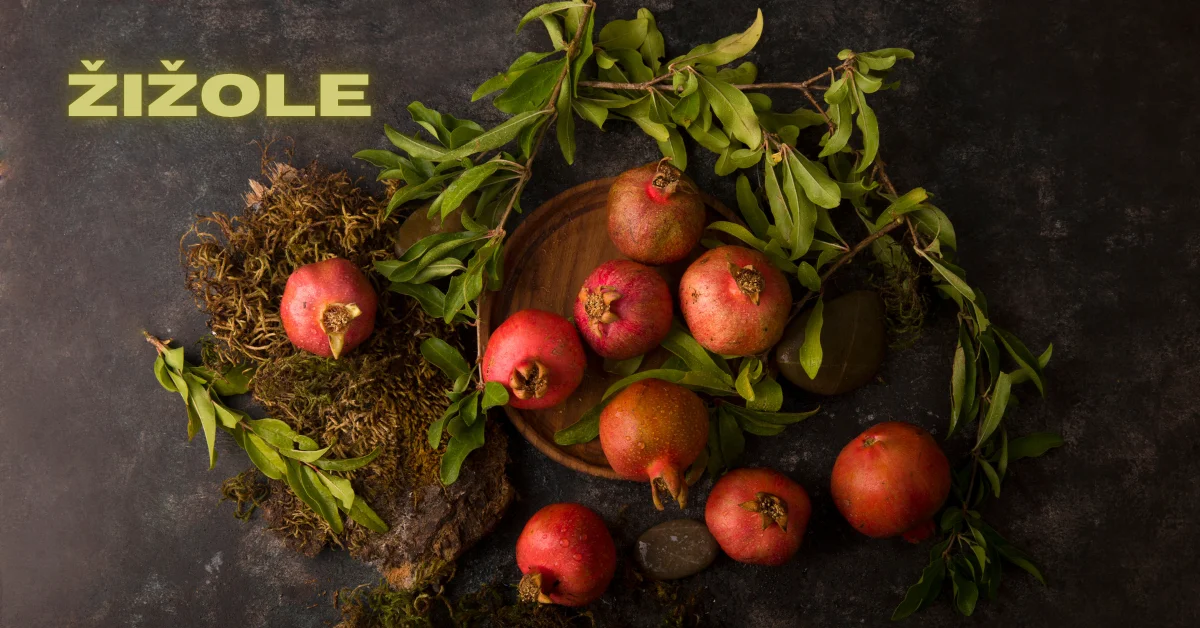Žižole, also known as jujube in many regions, is a fruit that has been cherished for centuries. Often called the “red date” because of its appearance and sweetness, žižole carries not only cultural importance but also a wide range of health benefits. From ancient traditions to modern nutritional studies, žižole has maintained a respected place in diets and herbal medicine. This article explores the fascinating background of žižole, its role in history, health properties, and how it is being rediscovered today.
Origins and Cultural Significance of Žižole
Žižole has a rich history that stretches across continents. Native to China, it has been cultivated for more than 4,000 years. Over time, žižole spread across Asia, the Middle East, and the Mediterranean, becoming an essential part of diets and traditional medicine.
In Europe, particularly in the Adriatic region, žižole gained a unique cultural identity. Coastal communities in Croatia, Montenegro, and Italy have long celebrated the fruit, integrating it into seasonal festivals and traditional drinks. For example, in Dalmatia, žižole liqueurs and jams remain popular, passed down through generations as a symbol of hospitality and health.
Botanical Features of Žižole
The žižole tree (Ziziphus jujuba) is small, hardy, and adaptable to different climates. It thrives in warm, dry conditions and can tolerate poor soil, which makes it a resilient crop. The fruit itself varies in shape—sometimes round, sometimes oval—and changes color as it ripens. Initially green, žižole turns brown or deep red, resembling a date in both texture and taste when dried.
Its sweet, tangy flavor makes it versatile. Fresh žižole has a crisp, apple-like bite, while dried ones offer chewy sweetness similar to figs or raisins.
Health Benefits of Žižole
One of the reasons žižole has remained popular for centuries is its impressive nutritional profile. It contains essential vitamins, minerals, and antioxidants, making it a natural health booster.
Rich in Vitamin C
Žižole is an excellent source of vitamin C, which strengthens the immune system and helps the body fight off infections.
Supports Better Sleep
Traditional medicine often recommends žižole for improving sleep quality. Compounds in the fruit have calming properties, helping to reduce anxiety and insomnia.
Digestive Health
Žižole is high in dietary fiber, supporting healthy digestion and preventing constipation.
Antioxidant Power
The antioxidants in help combat free radicals, reducing the risk of chronic diseases and slowing the aging process.
Energy Booster
Because of its natural sugars, offers a quick and healthy source of energy without the crash that processed snacks often bring.
Žižole in Traditional Medicine
Throughout history, has been more than just a fruit. In Chinese medicine, it is believed to nourish the blood, calm the mind, and improve overall vitality. Herbalists often use it in tonics to strengthen the body after illness. In Mediterranean regions, syrup or teas are still consumed during seasonal changes to prevent colds and boost energy.
Culinary Uses of Žižole
Beyond health benefits, is a delight in the kitchen. Its versatility makes it suitable for sweet and savory dishes alike.
-
Fresh Consumption: Crisp can be eaten raw like an apple.
-
Dried Snacks: Dried is popular as a healthy snack or added to trail mixes.
-
Desserts: It can be used in cakes, jams, and pastries.
-
Beverages: In some cultures, is fermented to create wine or infused into liqueurs.
-
Medicinal Teas: Sliced boiled in water makes a soothing tea often consumed before bedtime.
Žižole in Modern Wellness Trends
As people search for natural remedies and superfoods, is gaining renewed global attention. Nutritionists highlight it as a low-calorie fruit with powerful health properties. Wellness brands now include extracts in supplements aimed at improving sleep, reducing stress, and supporting digestion.
In gourmet cuisine, chefs use as a unique ingredient to bring exotic flavors to their creations. Its natural sweetness and chewy texture make it a creative alternative to processed sugars.
Growing and Harvesting Žižole
Cultivating requires patience but little maintenance. The trees begin to bear fruit within a few years, and once established, they provide a steady yield. Harvesting usually takes place in late summer or early autumn, depending on the climate. Farmers pick them by hand to preserve their delicate skin, after which the fruits are either eaten fresh or dried in the sun.
Symbolism and Folklore of Žižole
Beyond health and taste, holds symbolic meaning in many cultures. In Asia, it is considered a fruit of fertility and longevity, often included in wedding rituals. In Mediterranean folklore, represents abundance and prosperity, with households keeping dried fruits as a sign of good fortune.
Challenges and Future of Žižole Cultivation
While is resilient, its cultivation faces challenges such as limited awareness outside traditional regions. Modern farming techniques and marketing could help expand its presence in global markets. As more people discover its benefits, has the potential to become a leading fruit in both wellness and culinary industries.
Conclusion
Žižole is far more than just a fruit—it is a cultural treasure, a health booster, and a versatile ingredient. From ancient traditions to modern health movements, its journey reflects how food connects people across time and geography. Whether enjoyed fresh, dried, or brewed into tea, continues to nourish both body and spirit.
As global interest in natural foods grows, stands ready to reclaim its place as one of the world’s most fascinating and beneficial fruits.
